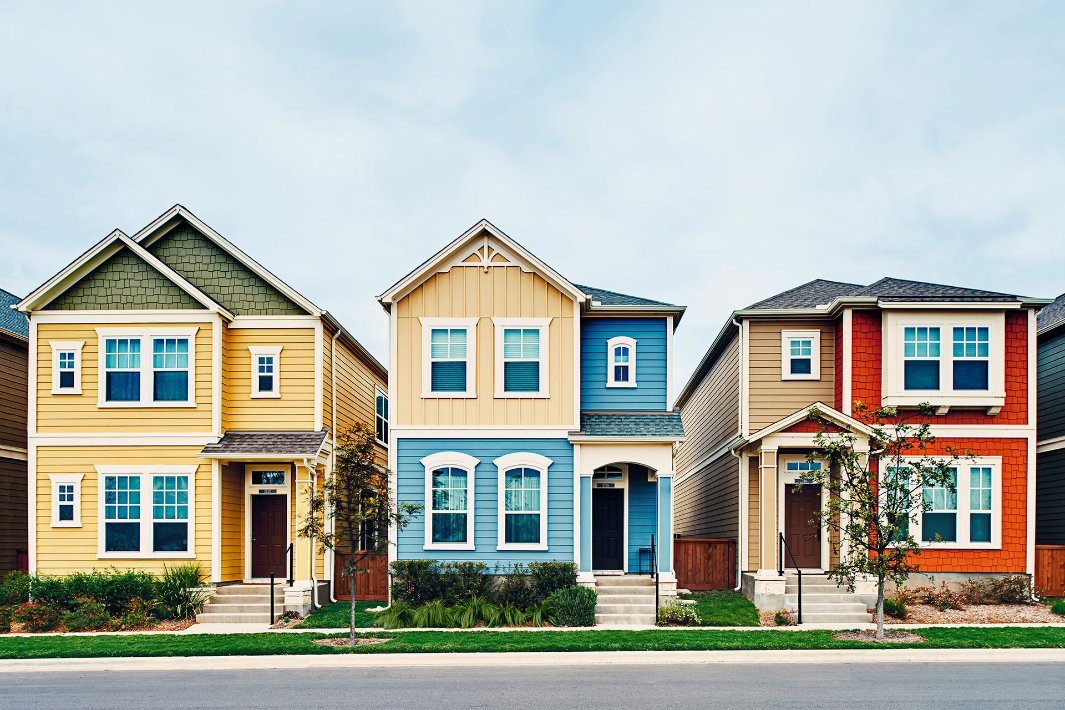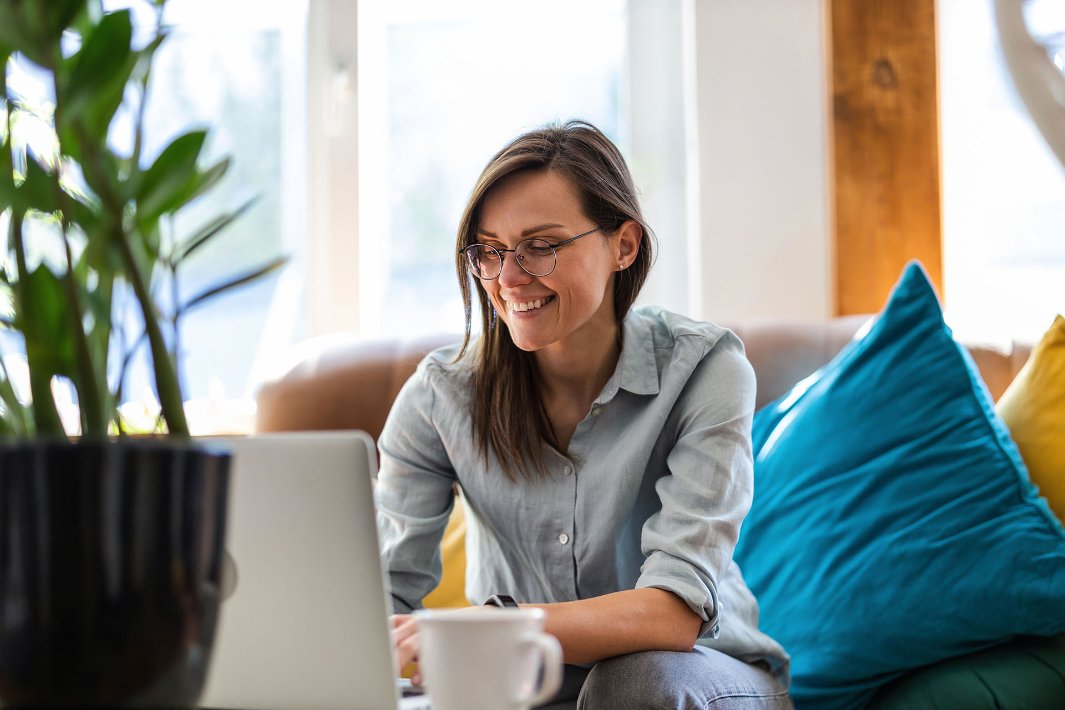How to go contactless house hunting
So far, 2020 has been a weird time to move homes. For months now, house-hunting plans across the country have been sidelined by COVID -19 health concerns and local lockdowns. If you're still thinking about buying a new home and have been getting a little itchy to pick up plans again, you're in luck. Rates are currently historically low and sellers have found innovative ways to deal with home buyers' current need to go contactless when house hunting.
While it's true that the process of finding your next home is a little more complicated now than it was just 12 months ago, you don't have to suspend your search altogether. You can safely find the ideal home in a perfect neighborhood — even cross-country — by switching on your cellphone or booting up your laptop. Almost every step in the process of house hunting has gone virtual!
Be an online listing detective
When looking for available homes online, remember that any listing agent worth a dime is skilled at choosing the right words and cropped photos to make even the ugliest homes look and sound appealing. Here are some common tricks to be aware of.
Photo red flags:
- Mostly exterior photos: Interiors may need work
- Closed window shades: Views outside are awful
- Sinks from every angle: Tiny bathroom
- Stretched out pics: Rooms are smaller than they appear
What words mean:
- Comfy: Worn out
- Cozy: Small
- Generous-sized rooms: Average-sized rooms
- Great bones: Gut rehab needed
- Handyman special: Has been neglected
- Lots of potential: Dated and needs updating
- Old-world charm: Just old
- One-of-a-kind: The previous owner had peculiar tastes
- Partial views: Disappointing views
- Quiet block: Neighbors will complain if you throw a party
Roll the Video
Even before the coronavirus pandemic, real estate agents had embraced video as a smart and simple way to reach as many prospective buyers as possible. Some virtual home tours are really professional-quality. In fact, in today's competitive real estate world, if an online home listing doesn't include a video tour, it may be passed over for one that does.
If there is a listing that catches your eye but doesn't include a video tour, do yourself a favor and don't discount the listing. Hungry agents will do whatever they can to keep a buyer interested and might create a custom video or do a personalized walkthrough via Zoom or Facetime.
Get a floor plan
Like what you see on video? Look to see if the listing has an up-to-date floorplan that you can reference. That will allow you to better understand how the house is situated and how big each room is. Plus, it may reveal spaces the sellers are skipping over that are begging for a closer look. If there is no floorplan with the listing, request one.
Check out the hood
Google Maps is an excellent tool to help you get a feel for a prospective neighborhood and enables you to anticipate what to expect on commutes, a quick grocery run or a dog walk. You can see traffic trends, property elevation and get a pretty accurate idea of how long it'll take to walk, drive or bike to a favorite park or restaurant. Speaking of which, if local businesses have indoor maps available, you can access those via Google maps, too. It's a neat way to get a taste of a new neighborhood.
Another great feature of Google Maps is that you can pin places of interest, add notes on each location, and — if you're planning a real-world visit — include directions to each listing. Similar services include Satellite.net, which pulls up a satellite view of any location for a quick snapshot of the surrounding area, and Instant Street View, which displays images of most any address without having to access the Google Maps app.
Dig deeper with 3D
Google Earth is another neat online tool that lets you zero in on an address to see a 3-D rendering of the house and surrounding property. As you zoom out, you'll see a birdseye view of the area so you can map out neighboring libraries, parks, grocery stores, gas stations, whatever you fancy. You can also see how far schools, hospitals, fire departments and airports are in relation to the properties you're considering. This can give you an idea of whether you'll be living on a quiet street or one that might be central to essential services.
Take a virtual stroll
When picking a neighborhood to live in, it's nice to hit the pavement. That's why Walkscore is such a great online tool. Enter in an address and the site tells you how walkable and bikeable the area is. You can also explore transportation options and get a snapshot of what a typical commute might be like. Plus, you can expand the Walkscore map to see area amenities like local restaurants, cafes, bars, shopping, education, etc.
A unique feature reveals how far you can walk (or bike or drive) within a specific timeframe. This makes it easy to know what's within a 10-minute walking distance from your home. You'll see pictures of local apartments and homes for sale, too, and get more in-depth info on home sale history for the surrounding neighborhood. We love this site, especially for buyers in the early stages of househunting who might be unable to get to all of the areas under consideration.
Find a digital community
Social media sites like Facebook and Twitter are goldmines when it comes to getting a feel for a neighborhood (and the neighbors). Simply search the town name — or a similar hashtag — and there should be a neighborhood group that pops up!
If you're looking for more information about the neighborhood you're virtually house hunting in, try Nextdoor.com. You'll need to open an account and search for a group you're interested in joining (usually by village/neighborhood name). Nextdoor is like Facebook for a precise area, and neighbors post all sorts of things like complaints about garbage pickup, questions about parking regulations, and advice on school systems, local events and kid's activities. Have a question about the area? This is the perfect place to get answers and a digital sense of community.
Consider buying without visiting
In the current health crisis, sellers may be reluctant to have open houses and in-person home tours. And while it might be considered risky to buy a home when you can't tour the inside, it's not uncommon and it's been happening for a long time, even before coronavirus.
If you have some comfort level with the neighborhood or are an out-of-state buyer, buying sight unseen on a video's strength is a worthwhile option. If buyers have been to enough open houses, they know what they're looking for and will have the confidence to know when they come across the perfect property.
If it still feels a little risky, consult a real estate attorney who is willing to draft a contract to allow the buyer to back out if it's deemed that a video misrepresented the physical property.
Take precautions
Virtual house hunting is fine and dandy, but most people still prefer to see a listing with their own eyes before making an offer. If that sounds like you, but you're reluctant to enter a house where the current seller is still living, concentrate on vacant homes or new construction. Those are usually available to walk through as long as you follow agreed-on safety measures.
If you're interested in a home that's currently occupied, have your real estate agent verify that everyone in the household is healthy. Once you clear that hurdle, take all necessary precautions to protect yourself and follow CDC guidelines. Here are some tips to make your contactless visit as safe as can be:
- Request a private visit. Stay clear of “open houses where anyone can walk in.
- Wear protective face coverings
- Practice social distancing at all times. This includes your real estate agent. Drive there in separate cars and then, in smaller houses and condos, have your agent wait outside or in the entryway while you tour the home on your own.
- Ask that all rooms, closet doors and kitchen cabinets are left open to minimize the need to touch knobs and handles.
- Avoid touching any surfaces in the home without wearing disposable gloves — especially if you feel the need to turn on light switches and test water pressure of faucets, showers and toilets.
- Wash your hands thoroughly with soap after leaving the home
Ready to get started?
Now that you know that househunting can be done safely and with little to no contact, you can determine whether the time is right for you to make a move. Before you start the process, know that it's a competitive market out there. Once you determine the neighborhood you want to live in and find the house of your dreams, you'll want to move fast.
Your first phone call should be to a loan officer to determine what you can afford and start the pre-approval process. Having an underwritten pre-approval means that you can make an offer on your next dream house with confidence, giving you a competitive edge over other homebuyers.
And since dealing with a Movement Mortgage loan officer is entirely contactless, it's a win-win. Find a local loan officer here or start your online application here.


